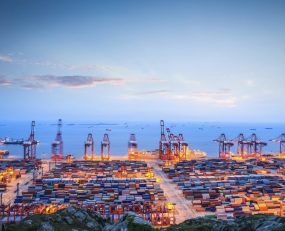
More news is emerging from South Korea of continuing increases in the number of new orders for ships.
Press reports assert that South Korean shipbuilders saw a sevenfold rise year-on-year in new orders in the first half of 2021, hitting a total of 1.09m tonnes, the highest figure since 2008. South Korea remains the largest builder of ships by value and tonnage.
Both Korea Shipbuilding & Offshore Engineering and Samsung Heavy Industries have just announced over the past week, major new orders of very large LNG carriers and additional, comparatively smaller, orders for 13,000 TEU vessels.
It appears that the ship-yards in South Korea at least are filling up with orders for LNG vessels as well as container vessels, with obvious implications for availability and prices of both types of ship. Certainly, most of the major shipping lines are ordering furiously, with CMA CGM Group having announced 22 new ships at the end of April, 12 of which were LNG powered medium-sized vessels of between 13-15,000 TEU. Mediterranean Shipping Company (MSC) is also believed to be expanding its fleet aggressively, both through new orders as well by buying second-hand vessels. The result of this scramble for shipbuilding capacity is higher prices.
It is worth noting that CMA CGM has ordered its ships from China State Shipbuilding Corp and that they are utilising new fuels. The cost of steel is fairly resistant to inflation over the medium-term, not least as China is oversupplied with the stuff. However, producing new propulsion systems will drive up the price of new builds.
The implications of this order boom for freight markets is fairly predictable. In the short-term, stretching into 2022, the market will be short of container shipping capacity not least as the scrapping of older vessels resumes. However, from around 2023-2024 the wave of newly ordered ships will start entering fleets. Yet these ships will have cost their owners and operators more to buy and will probably be more costly to run. This will presumably have an impact on both the profit margins of shipping lines but also freight rates. The containers lines will be keen to retain the sorts of profit margins they have experienced over the past year, not least to cover the higher costs of the new vessels and will thus be motivated to release new capacity in a disciplined manner.
All of these forces provide support for freight rates over the medium term.
Source: Transport Intelligence, June 10, 2021
Author: Thomas Cullen